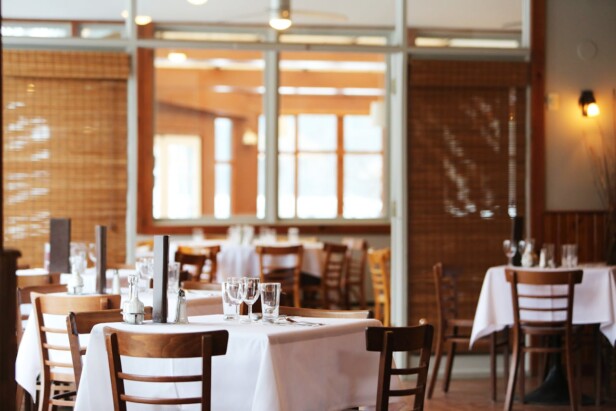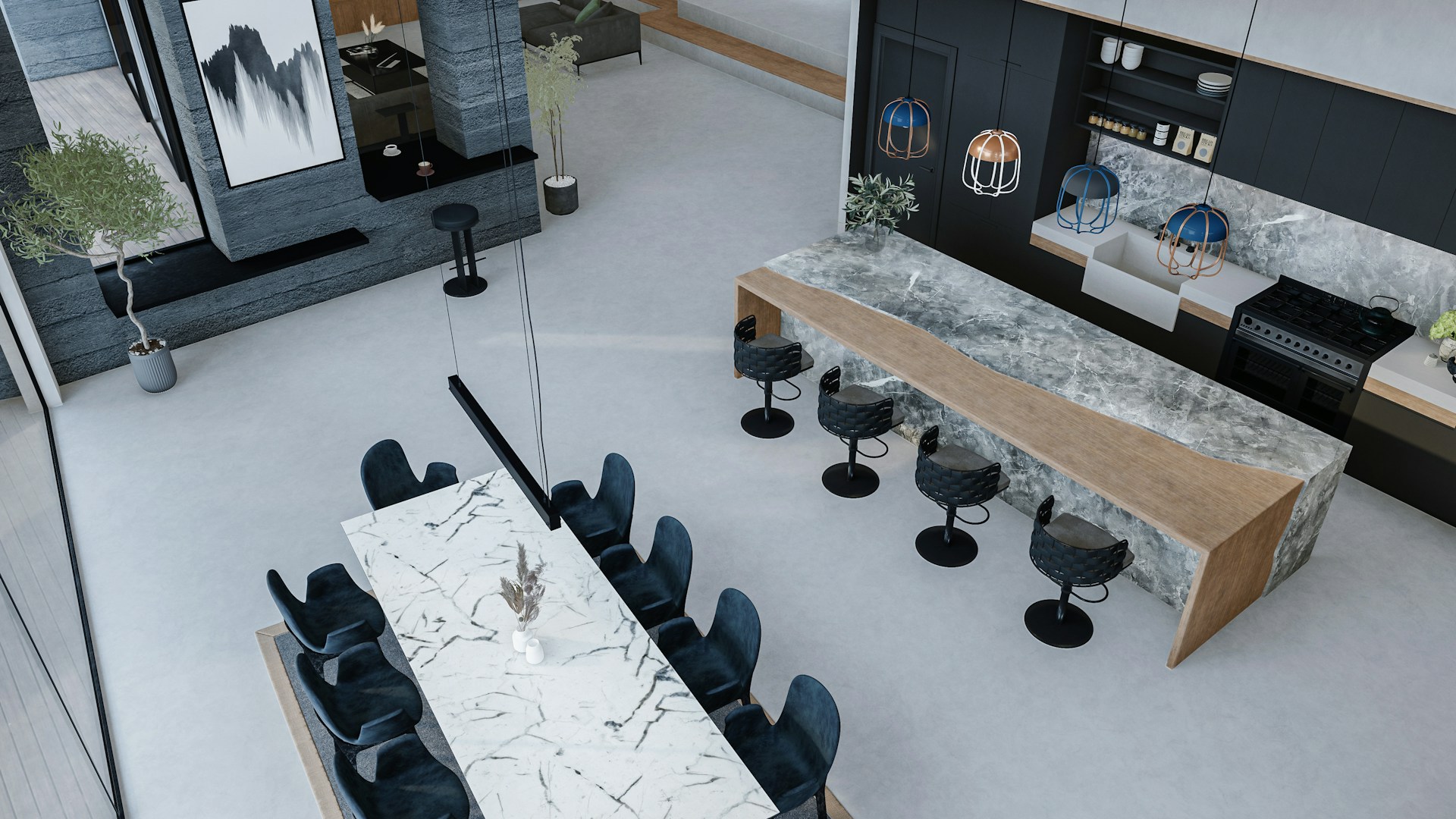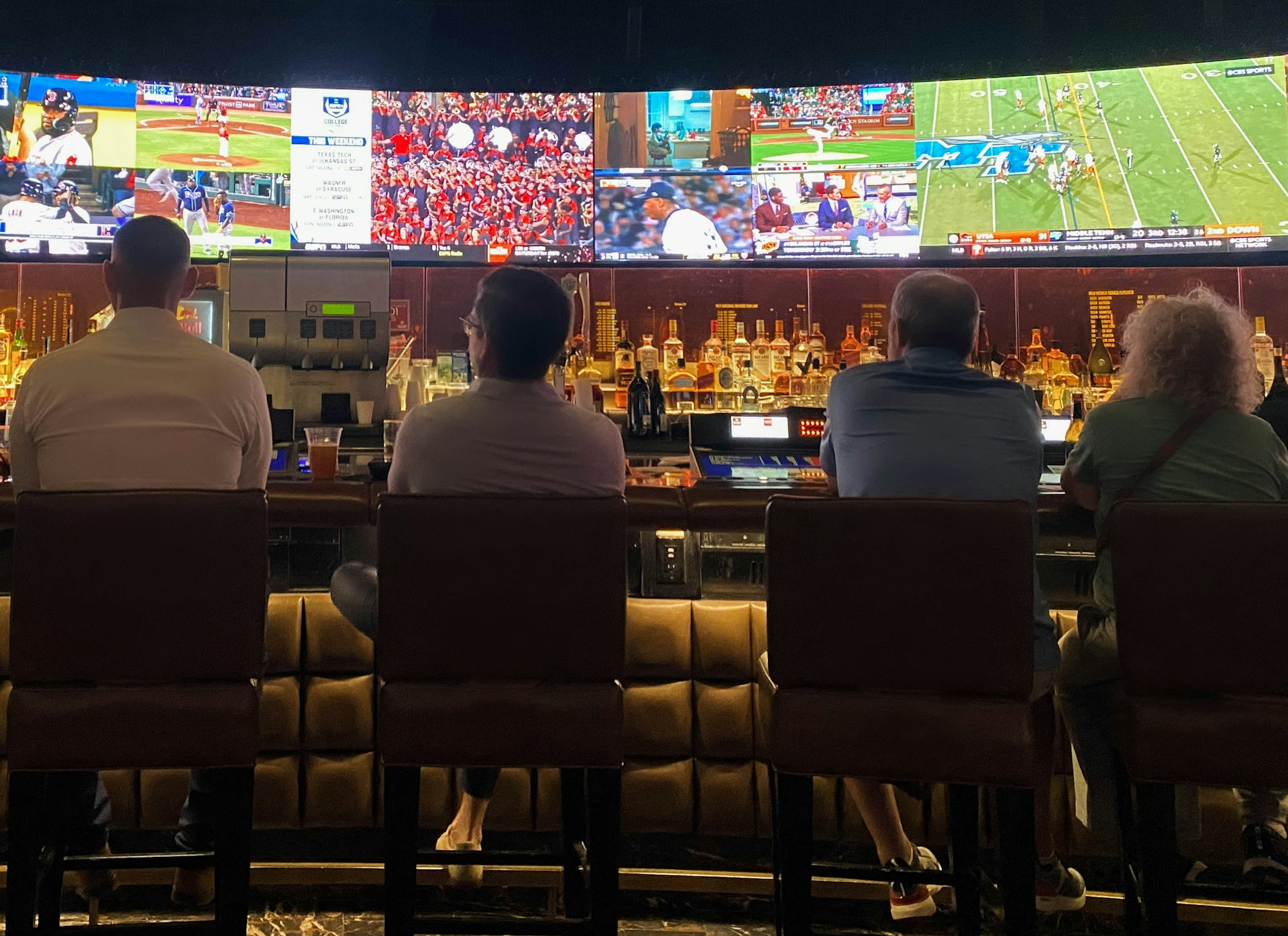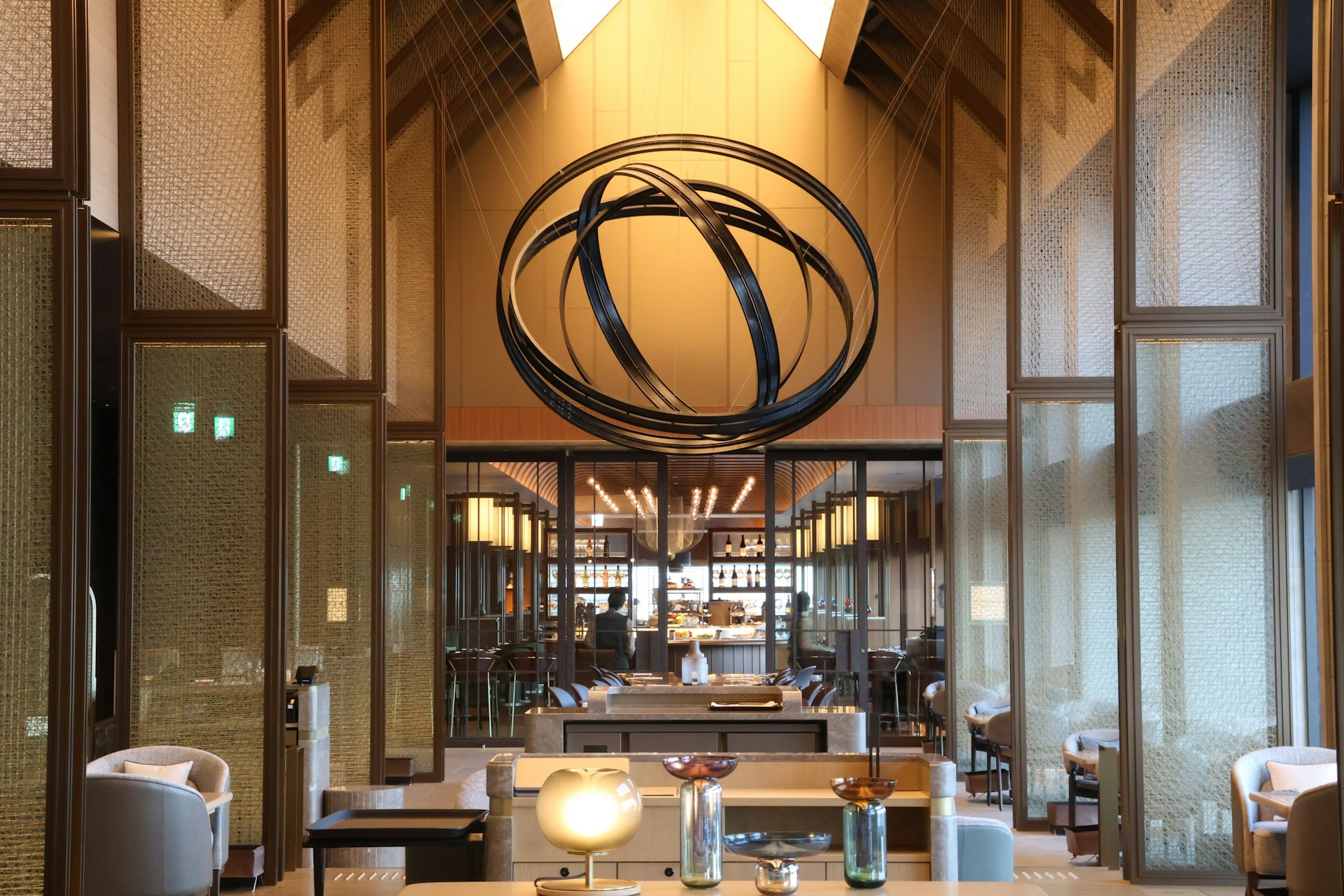A single grease trap misjudgment can shut down an entire kitchen for weeks. Restaurant planning and construction demands a level of precision that other commercial projects simply don’t require, where operational flow meets stringent code compliance in ways that can make or break a business before it even opens.
Unlike typical retail or office buildouts, restaurant construction transforms raw space into a highly regulated food production facility that must satisfy health departments, fire marshals, and ADA inspectors while maintaining efficient operational flow. We coordinate technical systems like Type 1 hood ventilation, grease management, and specialized HVAC alongside design elements that shape guest experience, knowing that early decisions in layout and infrastructure lock in outcomes that are expensive and disruptive to change later.
What Are The Core Steps—And Who Is On The Project Team?
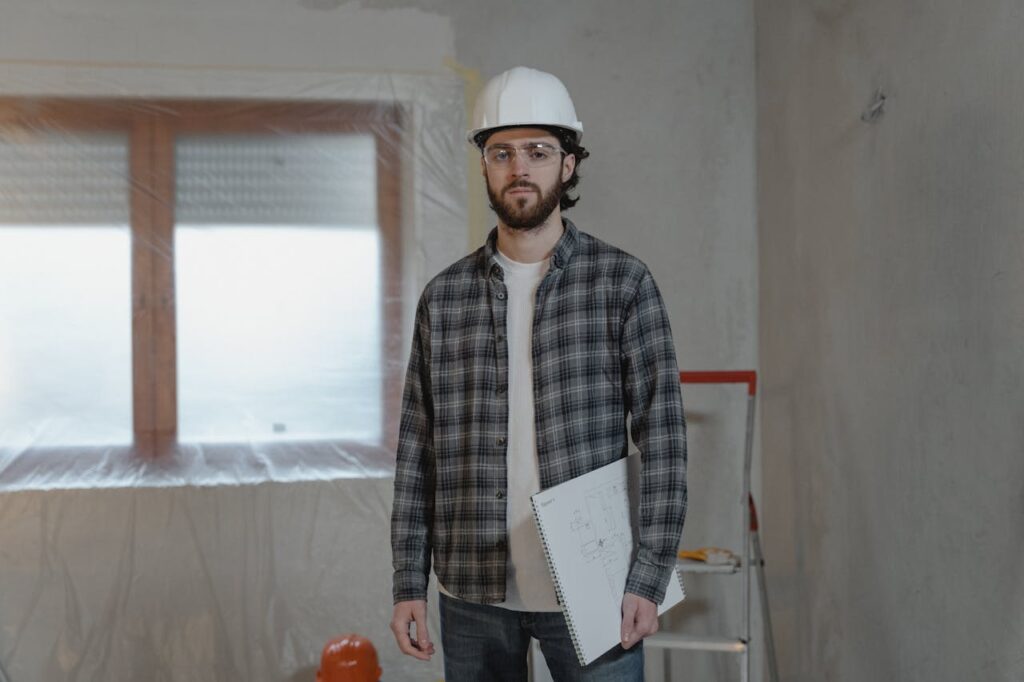
Define your concept and goals first. Brand identity, customer experience, and operational priorities guide every construction decision that follows. Clear goals help our team make trade-offs between cost, schedule, and functionality throughout the build process.
We assemble project teams early because restaurant construction requires coordination across multiple specialties. Core team members include the architect who translates vision into buildable plans, the interior designer who shapes guest experience, and our construction project manager who coordinates schedules and budgets. The restaurant contractor manages day-to-day execution, while specialized consultants handle kitchen design, lighting systems, HVAC engineering, and acoustic planning.
Design For Workflow, Systems, And Code From Day One
Kitchen workflow drives the entire layout. We plan prep stations, cooking lines, and service areas to minimize steps and bottlenecks during peak service. Hood systems and grease management require early coordination with mechanical systems to meet health department requirements.
Power and plumbing infrastructure must support commercial equipment loads and three-compartment sinks. ADA compliance affects counter heights, aisle widths, and restroom configurations. We integrate these requirements during initial design rather than retrofitting later.
Sustainable systems reduce long-term operating costs. Energy-efficient HVAC, LED lighting, and low-flow fixtures cut utility expenses while often qualifying for local rebates or tax incentives.
Choose The Right Delivery Method
Three delivery methods suit different project goals and risk profiles. Design-bid-build offers the most cost control by completing drawings before contractor selection. This method works best when schedule flexibility exists and budget certainty matters most.
Design-build accelerates timelines by combining design and construction under one contract. We handle both phases, streamlining communication and reducing coordination delays. This approach suits projects with tight opening deadlines or complex technical requirements.
Construction manager at risk (CMAR) brings our team into planning early while maintaining separate design contracts. We provide cost feedback during design development and guarantee final pricing. This method balances schedule acceleration with cost transparency.
Plan Permits And Approvals Early
Permit approval timelines often determine project schedules. We contact health departments, building officials, and fire marshals before finalizing construction drawings. Early coordination identifies potential conflicts and reduces review cycles.
Authority having jurisdiction (AHJ) requirements vary significantly between locations. Some jurisdictions require specific drawing formats, equipment specifications, or inspection sequences. We document these requirements and build compliance into our construction drawings from the start.
Landlord approvals add another layer when working in leased spaces. Many property owners require plan review, contractor pre-qualification, and insurance verification before construction begins. We secure these approvals before submitting to municipal authorities to avoid delays.
How Do Site Selection, Lease Terms, And Approvals Shape Feasibility?
Site selection determines whether your restaurant concept can actually work in practice. We evaluate locations for foot traffic patterns, parking availability, visibility from key approaches, and vehicular access. These factors directly impact customer convenience and operational logistics.
Zoning compliance represents the first legal hurdle. We verify that restaurant use is permitted in the desired zone and check for any special restrictions on hours, outdoor seating, or signage. Some areas have specific limitations on fast food establishments or drive-through services that could affect your concept.
Infrastructure Readiness
Existing infrastructure capacity shapes both feasibility and budget. We assess HVAC systems to determine if they can handle kitchen heat loads and ventilation requirements. Electrical service capacity must support commercial kitchen equipment, lighting, and HVAC demands.
Kitchen venting paths require careful evaluation. Type 1 hood systems need direct exterior access, and routing through shared spaces or around structural elements can be costly or impossible. Grease trap access affects both installation costs and ongoing maintenance requirements.
Plumbing infrastructure includes water pressure for dishwashers and sinks, plus adequate drainage for high-volume operations. We confirm structural limits for floor loading, especially for heavy equipment like walk-in coolers or large ovens.
Code Compliance And Permit History
Egress requirements and ADA compliance shape layout possibilities. We review existing egress paths and identify any modifications needed for safe evacuation. ADA compliance extends beyond doorway widths to include accessible routes, restroom facilities, and service counter heights.
Prior permit history can accelerate approvals or reveal potential complications. Properties with previous food service use often have established utility connections and may already meet basic health department requirements. We review records from the health department to understand any outstanding issues or special conditions.
Lease Terms And Tenant Improvement Allowances
Tenant improvement allowances can significantly offset construction costs but come with specific requirements. We examine TI allowance amounts, approved use categories, and reimbursement procedures. Some landlords restrict allowances to specific contractors or require detailed pre-approval for expenditures.
Landlord approval processes vary widely across properties. Some require detailed construction drawings before lease execution, while others allow conceptual plans. We identify all approval steps, required drawing formats, and timeline expectations. Missing these requirements can delay permits and increase costs.
Rent commencement clauses create schedule pressure. Many leases start rent regardless of permit delays or construction setbacks. We align construction timelines with rent start dates and negotiate appropriate contingencies where possible.
Shared Systems And Design Manuals
Multi-tenant buildings often have shared utilities, venting systems, or structural elements that limit modification options. We review building design manuals for specific requirements on signage, exterior modifications, and equipment installation. Some properties require pre-approved vendors or restrict work to specific hours.
Change limits in lease agreements can constrain restaurant operations or future modifications. We confirm which alterations require landlord approval and identify any permanent restrictions on the space. Getting these requirements in writing prevents costly rework during construction and ensures compliance with both lease terms and local codes.
What Timeline, Cost Drivers, And Code Steps Should You Expect?

Restaurant construction timeline ranges from 6 to 18 months depending on project complexity and local conditions. Fast-casual concepts in second-generation spaces often complete in 6 to 12 months, while full-service restaurants with new construction can extend to 18 months or beyond. We see significant variation based on location permitting processes, seasonal weather patterns, and equipment availability.
Many lease agreements intensify schedule pressure with limited rent-free periods. Developers typically receive 3 to 6 months of free rent during construction, but this window creates financial urgency when permits or inspections delay progress. We coordinate construction timelines carefully with lease milestones to avoid carrying costs during extended delays.
Timeline Variables That Impact Schedule
New construction requires comprehensive sitework, utility connections, and full structural systems. Shell spaces need extensive mechanical, electrical, and plumbing installations before restaurant-specific work begins. Second-generation restaurant spaces often reduce construction time by 2 to 4 months since basic infrastructure exists.
Restaurant type affects duration significantly. Quick-service restaurants with simplified kitchens and standardized layouts complete faster than full-service establishments. Fine dining concepts require custom millwork, sophisticated lighting systems, and complex kitchen equipment that extend schedules. We factor these variables into early timeline planning to set realistic expectations.
Major Cost Drivers In Restaurant Construction
Space condition represents the largest cost variable in restaurant construction. Shell spaces typically cost $300 to $600 per square foot while second-generation restaurant buildouts range from $150 to $300 per square foot. The difference reflects existing infrastructure, basic mechanical systems, and previous restaurant-specific installations.
Kitchen equipment drives significant budget variation. Commercial kitchen packages range from $50,000 to $250,000 or more depending on concept complexity. Walk-in coolers, hood systems, and specialized cooking equipment represent major line items that affect both cost and schedule. We coordinate equipment orders early since commercial appliances often require 12 to 16 week lead times.
Utility upgrades create substantial cost exposure in older buildings. Electrical service upgrades, HVAC capacity increases, and plumbing modifications for commercial kitchens can cost $50,000 to $150,000 in shell or retrofit situations. Gas line installations, grease trap connections, and fire suppression systems add complexity and expense.
Code Compliance Steps For Successful Approvals
We build code compliance into restaurant concepts from day one rather than treating it as an afterthought. Health department requirements, fire marshal specifications, and ADA access standards shape kitchen layout, egress paths, and equipment selection. Early compliance planning prevents costly redesign during construction.
Authority Having Jurisdiction contact happens before architectural drawings begin. Local health departments often have specific requirements for commercial kitchen layouts, sink placement, and food storage areas. Fire marshals review suppression systems, emergency exits, and equipment clearances. Building departments focus on structural loads, HVAC capacity, and electrical service adequacy.
Inspection phases require careful mapping and scheduling coordination. Rough-in inspections for plumbing, electrical, and HVAC occur before walls close up. Equipment installations trigger additional inspections for gas connections, hood systems, and fire suppression. Final health inspections verify compliance before certificate of occupancy issuance.
Lease restrictions often govern signage placement, venting routes, and equipment specifications. Multi-tenant buildings may limit exhaust fan locations, restrict grease disposal methods, or require specific equipment approvals. We confirm these restrictions in writing during lease review to avoid conflicts during construction.
Document tracking prevents approval delays and disputes. We maintain written records of all agency communications, approved plans, and inspection results. Change orders require updated permits and additional reviews. Digital documentation systems help teams track approval status and identify potential schedule risks early in the construction process.
New Construction Vs. Remodel: Which Path Fits Your Goals?
The choice between new restaurant construction and remodeling an existing space shapes every aspect of your project. Each path carries distinct advantages and limitations that directly impact your timeline, budget, and operational goals.
New construction delivers complete design freedom but demands extensive sitework, comprehensive permitting, and extended timelines. The process typically requires 6 to 12 months or more when you include site preparation, utility connections, and full plan reviews from multiple authorities.
We manage new builds knowing they carry higher upfront costs, particularly for utilities and shell construction. Electrical service installation, water and sewer connections, and gas line extensions can add $9,000 to $34,500 or more depending on distance from existing infrastructure. These projects also face full plan review cycles, which means more inspections and longer approval windows.
Understanding Second-Generation Buildout Advantages
Second-generation buildouts and restaurant remodels work within existing infrastructure, which offers significant speed and cost advantages. These projects typically move faster because basic systems like plumbing rough-ins, HVAC distribution, and electrical service already exist.
We coordinate remodels knowing they often cost 30% to 50% less than new construction, especially when existing restaurants provide kitchen-ready infrastructure. The savings come from reusing structural elements, utility connections, and sometimes even equipment that supports your concept.
However, remodels require us to work around existing constraints. Kitchen layouts may limit equipment placement, existing HVAC systems might not support your ventilation needs, and structural elements could restrict design flexibility. We evaluate these limitations early to determine if they align with your operational requirements.
Navigating Multi-Tenant Building Complexities
Multi-tenant buildings introduce additional layers of coordination that affect both new construction and remodel projects. Landlords typically maintain strict rules about shared utilities, venting paths, and construction access that can limit your options.
We work with building management to understand shared systems like HVAC, electrical panels, and grease trap access before finalizing plans. These shared utilities often restrict when and how we can make connections or upgrades. Some buildings require off-hours work to avoid disrupting other tenants, which can extend timelines and increase labor costs.
Phased renovation schedules become necessary when buildings restrict construction hours or require coordination with other tenant improvements. We sequence work to minimize disruptions while meeting landlord requirements and your opening schedule.
Managing Project Risks and Surprises
Remodel projects can deliver faster results but often reveal unexpected conditions once work begins. We encounter aging infrastructure, code compliance gaps, or structural issues that weren’t apparent during initial site walks.
Venting limitations represent one of the most common surprises in restaurant remodels. Existing ductwork paths may not support Type 1 hoods, or shared ventilation systems might restrict the cooking equipment you planned to install. We coordinate early with HVAC contractors and building engineers to identify these constraints before they impact your timeline.
New construction projects eliminate many of these surprises but introduce different risks. Weather delays, permit revisions, and utility connection schedules can all affect completion dates. We build contingency time into new construction schedules to account for these variables.
The key to success lies in early evaluation. We walk spaces with your architect and restaurant contractor to identify what can and cannot change within your budget and timeline. This assessment helps us align construction decisions with lease milestones like rent commencement dates and opening targets that drive your cash flow planning.
Conclusion and Next Steps

Restaurant planning and construction succeeds when concept, code, systems, and flow align from the start. We’ve seen how early decisions shape everything from kitchen workflow to guest experience, and how correcting missteps later becomes exponentially more expensive. The key lies in treating preconstruction as seriously as the build-out itself, because that’s where success gets locked in.
At EB3 Construction, we approach every restaurant project with the understanding that each decision affects inspection timelines, operational efficiency, and opening readiness. We sequence work to minimize delays, order long-lead equipment early to avoid bottlenecks, and map inspection phases through closeout. Before you welcome your first guests, we ensure punch lists are closed, the certificate of occupancy is secured, all systems are tested, and your space is ready for staff training and soft opening events.
Ready to build a restaurant that opens on time and on budget? Contact EB3 Construction to discuss your project.

